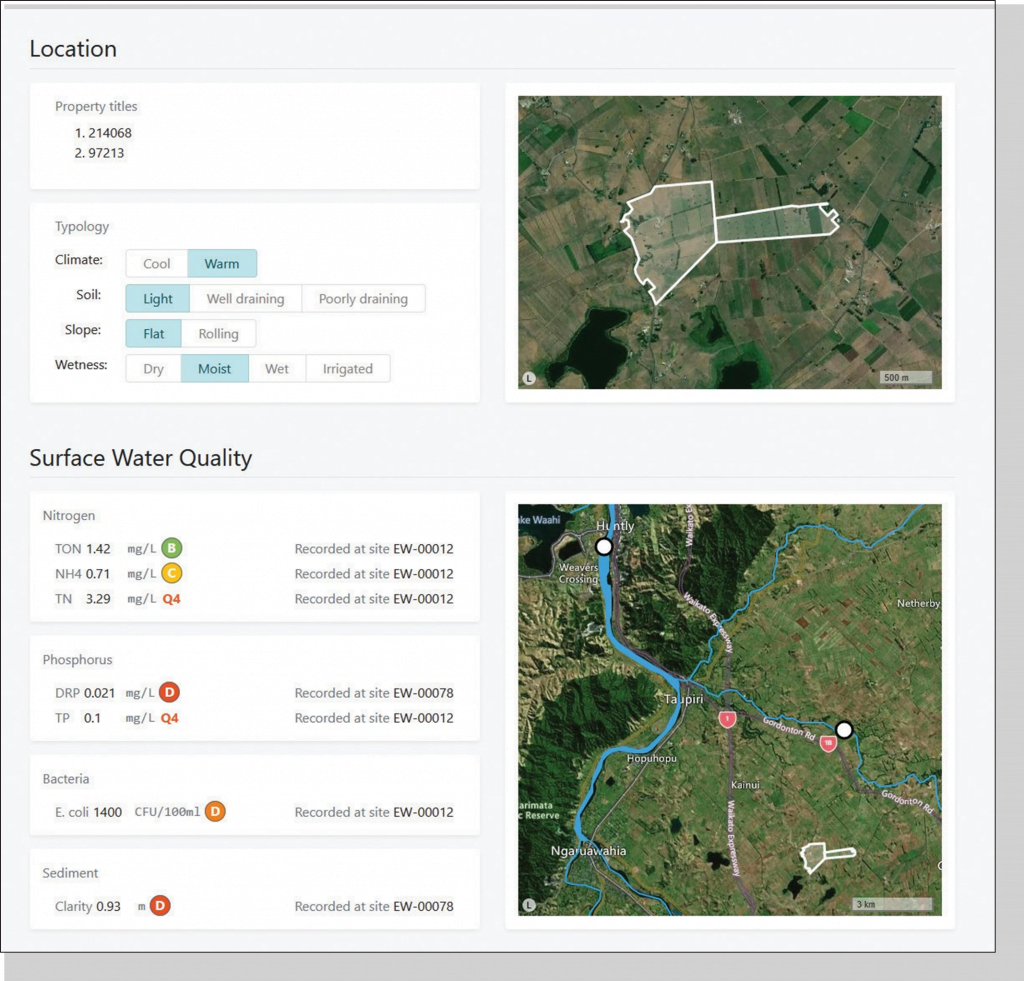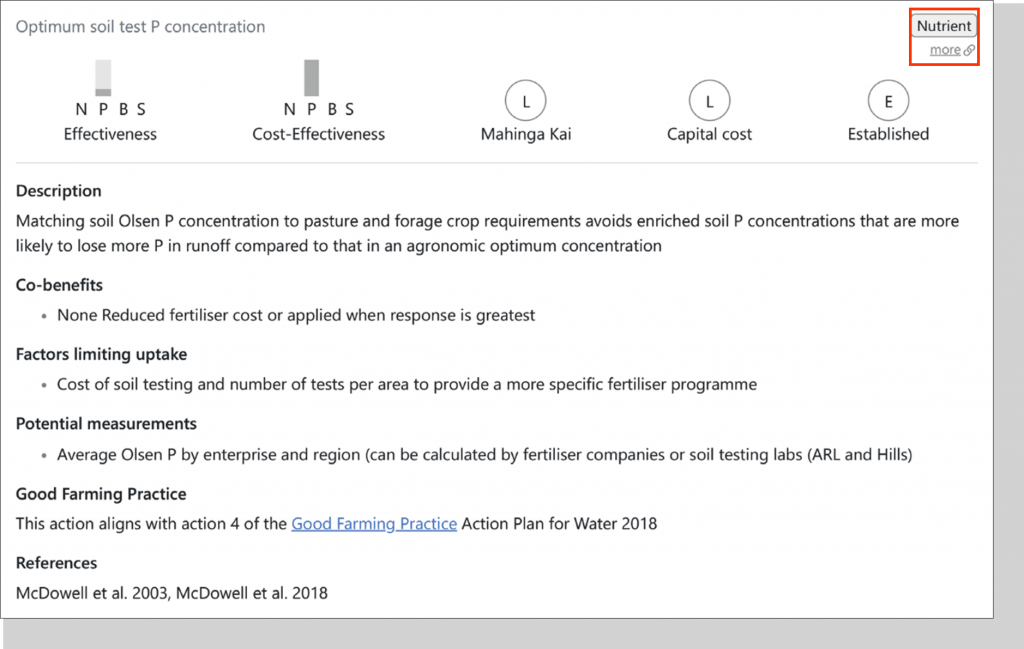Online Tool Aids Freshwater Action
A new online tool will make it easier for farmers and rural professionals to find the right mitigation options for freshwater farm plans that will contribute to improved freshwater outcomes.
When farmers and their advisors begin formulating the freshwater farm plans that will soon be compulsory for all pastoral farms larger than 20 ha, they first must bring together data about their property (including climate, soil and slope), as well as water quality data. Sometimes finding that information is not straightforward.
A project led by DairyNZ senior water quality scientist Katrina Macintosh has built an online tool that not only makes gathering that data easier, but also provides farm-specific prioritisation of actions to help meet freshwater outcomes.
“It’s basically a one-stop-shop to pull available data and resources together,” says Katrina. “Given the number of farm plans which are going to need to be done over the next while, if you can streamline access to that information to make it easily accessible, I think it’s a win-win for the dairy sector.”
The tool, now a prototype version (see Figure 1), allows users to identify and prioritise catchment-specific management practices and mitigation options for water quality that are optimised to their farm.

The project was developed to support the dairy sector’s response to the Action for Healthy Waterways reforms that will require freshwater farm plans as part of wider farm environment plans (FEPs). It was funded by DairyNZ and the Our Land and Water National Science Challenge Rural Professionals Fund. The intended users are dairy farmers and their advisors, but there is potential for the tool to be adapted to non-dairy pastoral farms.
Up-to-date science
The prototype tool links users to the most up-to-date science and resources, physical parameters of a farm, and helps prioritise mitigation actions based on the key water quality contaminants.
“Ecosystem health is affected by a multiplicity of drivers such as fine sediment, nutrients, water quantity (flow), light, shading, riparian vegetation and habitat quality,” says Katrina. “If you’re doing an action on-farm to improve water quality or stream habitat, like stream fencing and riparian planting, using cover crops and good land management practices, you’ll reduce your sediment and particulate phosphorus losses. Other actions might be more nitrogen-centric, but with most actions there are co-benefits for other key contaminants, and they’re all having a cumulative positive effect for in-stream health.”
The tool acknowledges that no two farms are the same, so each farm will have a tailored solution for the health of the freshwater in its catchment.
Using the tool
The prototype version of the tool is having its interface further developed to make it more user-friendly, but already it’s possible to find your farm on the displayed map and click on it to select it (see Figure 1). This triggers a display of the property’s typology (as determined by key characteristics like slope and climate), up-to-date surface water quality information, and a list of mitigations.
The information underpinning the tool is already freely available, but can take time to find and access.
Beneath the clearly laid out farm information are all the potential mitigations that can be ranked by their effectiveness in reducing contaminant loss, their cost-effectiveness and capital cost (see Figure 2). The mitigations are underpinned by a comprehensive body of knowledge built up over 20 years of work by scientists and researchers throughout New Zealand.

The tool acknowledges that no two farms are the same, so each farm will have a tailored solution for the health of the freshwater in its catchment. The tool has been designed to be used in conjunction with expert knowledge and on-farm visits to ascertain site-specific actions in relation to farmer goals.
The prototype version has been user-tested by rural professionals and dairy farmers, including a select group of environmentally leading dairy farmers. They generally found the tool easy to use and said they would recommend it to others.
“It makes it so much easier to get access to all the relevant information, particularly as people prepare to create or update a freshwater farm plan, whether that’s a rural professional or a farmer. Previously you could spend a lot of time on the web hunting for information and useful resources,” says Katrina.
Next steps
In the future, Katrina and the project team aim to develop the tool’s functionality so users can select mitigations for their property and then export them as a document to feed into farm plans.
Planning is underway to take the tool from a working prototype to a fully functional ‘bells and whistles version’ to support the continued uptake of environmentally driven actions on dairy farms.
A technology company will help DairyNZ develop the final version of the tool and make the interface slicker and easier to use.
The DairyNZ-developed tool is configured for dairy farms, but could, in principle, be developed for other farming types.
– Tony Benny for Our Land and Water National Science Challenge
More information:
- Rural Professionals Fund 2020-21
- Download PDF
- All text in this article is licensed for re-use under Creative Commons Attribution 4.0 International (CC BY 4.0)
Author
 View Our Strategy Document 2019 – 2024
View Our Strategy Document 2019 – 2024




Leave a Reply